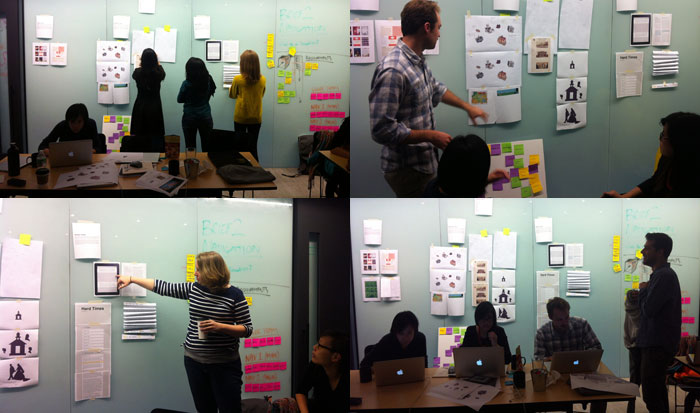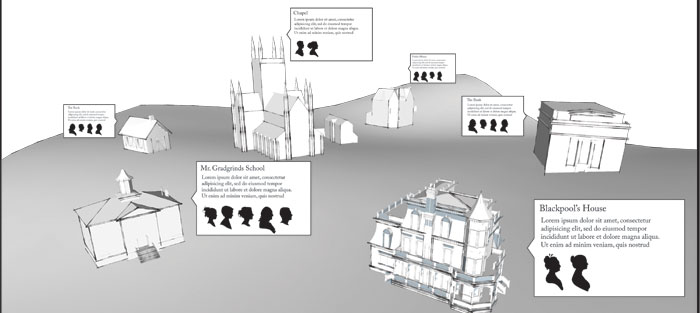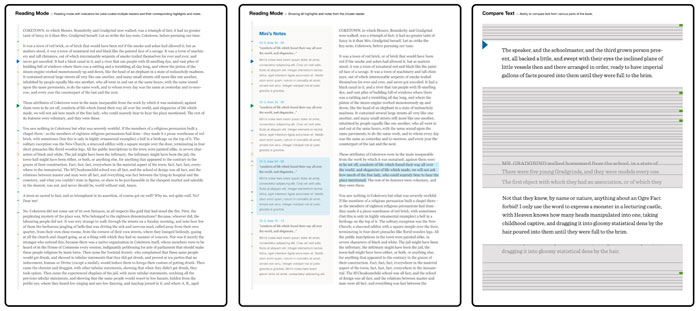Last week I ran a workshop called Books after Books over four half-days with first-year students of Interaction Design at the School of Visual Arts in New York.

I introduced the workshop with some thoughts about the state of the book in the digital, networked age. Books produce strong emotional reactions in those who read them, and the form of the book is an integral part of this reaction. As we move into the era of the ebook, there is much to be learned about how people relate to literature, culture, and the digital; both by observing the behaviours and interactions around this changing form, and by designing for new interactions and experiences. Books have never been static, unchanging or passsive objects; this is ever more visible in their newer, digital forms. There is much work to be done by designers in both ensuring that the affordances of the paper book—bookmarking, marginalia, appropriation and visible histories, to name a few—are continued in the ebook, and in exploring new opportunities in a new form.
Books After Books: SVA Workshop from stml on Slideshare
The workshop started with two briefs. The first examined the book cover: its purpose in the old world of bricks-and-mortar bookshops and bookshelves, and its new place online and embedded in devices, more avatar than wrapper for the book. The second looked at the problems of navigating a long-form electronic text, without the ability to thumb and spatially conceive of a solid block of paper.
After group discussions, the students split into three groups. Using Dickens’ Hard Times as a base, one took on the challenge of re-evaluating the cover, another of graphical forms of navigation, and the third looked to the presentation of the text itself, to see how it could be presented in new, hybrid forms between the page and the screen.

The cover team explored ways of representing the content of the book to communicate its changing state across different platforms, and to illustrate the ongoing process of reading the book itself:

The navigation team made a number of mappings across events, locations and characters within the book, to see how these could be used to illustrate and help find a reader’s place in the book:

The pages team developed a structure around a folded, codex-like single stream of text which expanded as the reader progressed, allowing the text to both represent itself, and allow multiple access points for reading and bookmarking:

You can download the full report on the workshop, including the teams responses, from this site [1.3MB PDF].
For students, thinking through these issues is as important as actually designing solutions for them, but the design process is a great way to do this, forcing everyone involved to test their ideas and assertions. I’d like to thank all the participants for a fascinating and stimulating few days, and to SVA for hosting and facilitating.
Comments are closed. Feel free to email if you have something to say, or leave a trackback from your own site.